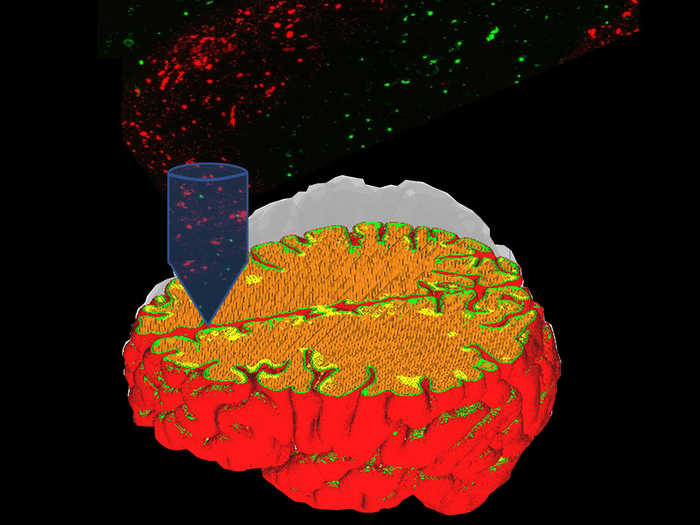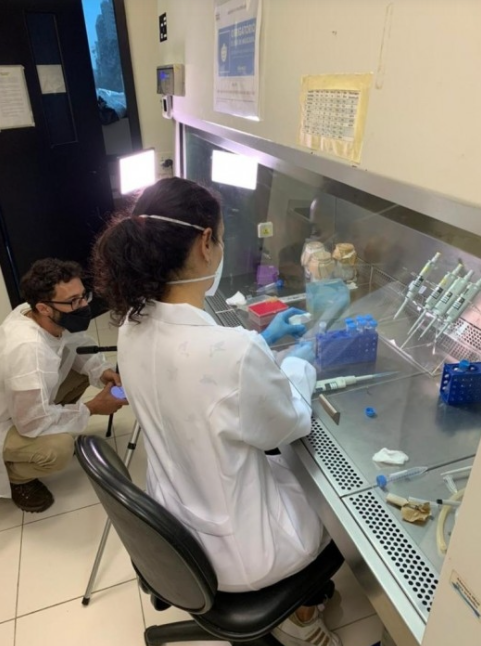Introduction: March 2022,Researchers at Politecnico di Milano and Humanitas University are using3D printingNerve tissue to study the cause and development of neurological disorders such as Pitt-Hopkins Syndrome (PTHS).

△By 3D analysis of cells derived from cortical organoidsbiologyPrint to create a 3D model of the cerebral cortex. Image via Politecnico di Milano.
This project has been awarded €250,000 by Fondazione Cariplofundingas “2021 Young Researchers BiomedicineResearch” as part of the call for projects,This project mainly uses3D bioprintingBlood vesselDecomposed neural tissue to create an in vitro model of the human cerebral cortex. Mattia Sponchioni of Politecnico di Milano (Politecnico di Milano) said: “Our ultimate goal is to lay the groundwork for understanding the various diseases that affect neurodevelopment, in order to help determine strategies for treatment.”
Investigate the cause of PTHS
PTHS is a rare inherited neurological disorder characterized by intellectual disability and developmental delay, breathing problems, recurrent seizures, and distinctive facial features. It is only known that the disease is caused by spontaneous mutations in the TCF4 gene, and more about PTHS is still unknown, which makes the treatment of the disease more difficult.
This is called “by generating3D printingvascularized cortical organoids to explore the molecular mechanisms of Pitt-Hopkins syndrome” new study aims to investigate the molecular causes of PTHS pathogenesis and progression.With funding provided by Fondazione Cariplo, the researchers are creating a3D bioprintingA human cortical model of vascularized neural tissue that enables the collection of important biological data over time.“This is obviously a highly interdisciplinary project, but the combined engineering expertise, materials science, microfluidics, neurobiology and developmental biology of the Politecnico and Humanitas teams will help the project progress and allow us to Full of confidence in the success of the experiment.”

△ Some research projects utilize3D printing technologyA medical breakthrough has been achieved, pictured here is a nerve printed by the University of SheffieldImplants. Image via University of Sheffield.
3D printed neural tissue
According to the team, the project of printing neural tissue has important medical implications because the cerebral cortex of the brain cannot currently be replicated and studied in the laboratory due to its complex structure. 3D bioprinting will allow researchers to reproduce the structural complexity of the region, allowing researchers to study neural tissue for extended periods of time.The researchers integrated 3D-printed, highly precise vascularized neural organoid structures (tiny, self-organizing 3D tissue cultures derived from stem cells) with an intricate network of supports to form a model of the human cerebral cortex. The two universities will also collaborate to develop new methods and materials for 3D bioprinting vascularized tissue, using microfluidics in 3D cell culture.
“Because of this powerful synergy, we hope to obtain ‘bioprinted organoids’ with primitive vascular systems, capable of printing complex geometries, better suited for studying disease-related Organ or tissue.”

△UNIFESP researchers are studying neural cell bioprinting. Photo via FAPESP/researchers’ archive.
Studying Neurological Disorders with AM
With the latest advances in bioprinting, the use of AM technology to study neurological diseases and provide opportunities for treatment, the use of AM to study neurological diseases has received more and more attention.
● The Meso-Brain research project, led by Aston University, is developing 3D nanoprinting technology to produce a new generation of modeling and testing tools that could revolutionize the treatment of diseases such as Parkinson’s and dementia.
Fluicell, Cellectricon and Karolinska Institutet successfully 3D print nerve cells into complex patterns that can be used to simulate the development of neurological diseases
● Researchers at the Federal University of Sao Paulo have developed a method for 3D printing brain cells that can survive for up to two weeks, allowing researchers to better understand the function of nerve cells in relation to diseases of the central nervous system.
● Neuroscientists from the University of Sheffield, St Petersburg State University and Technische Universitat Dresden have developed a 3D printed neural implant that can be used to treat nervous system injuries such as paralysis.
(responsible editor: admin)


0 Comments for “Politecnico di Milano and Humanitas University collaborate: 3D printing neural tissue to study neurological diseases”